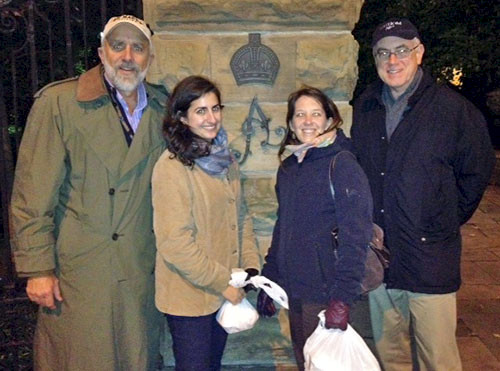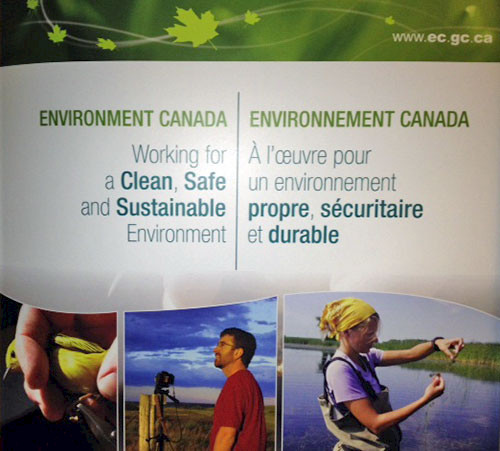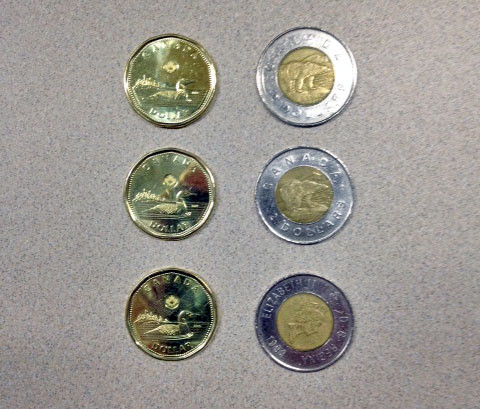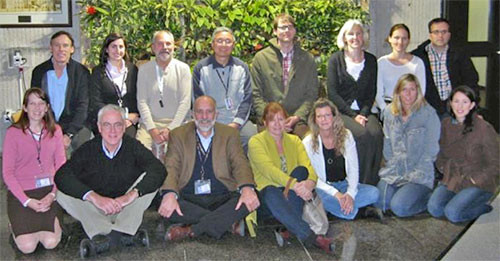Science communication and integration with Environment Canada
Bill Dennison ·Along with Caroline Wicks and Alex Fries, I traveled to Toronto, Canada for a three day workshop with Environment Canada. We also met up with Bill Nuttle, who took a train down from Ottawa. We conducted a science communication and integration workshop with various Environment Canada staff based in the Toronto area.

The Canadian weather service is within Environment Canada, and as we walked into the lobby of the Environment Canada building, a series of real time weather maps on a series of computer screens were on display. It was interesting to view North American weather maps from the Canadian perspective. There was a photograph of the building in downtown Toronto of the original weather service building, which is now part of the University of Toronto campus. When we had dinner in downtown Toronto and were taking a short walking tour, we indeed saw this beautiful building in person.

Environment Canada is the Canadian organization that partners with the U.S. Environmental Protection Agency in the bi-national Great Lakes management. In the current Canadian government environmental issues do not rate highly; however, the Great Lakes environmental management is an active program, with bi-national Lake Management Plans for each of the Great Lakes that share borders between countries (Superior, Huron, Erie, Ontario). The participants were very knowledgeable about the Great Lakes and when we conducted a science communication exercise to draft a poster layout design, participants chose topics informing people about the Great Lakes. These poster designs were interesting and included information about the lake morphologies, watershed characteristics including population numbers, and even the number of Stanley Cups accrued by hockey teams based in Great Lake cities.

Traveling around Toronto on public transportation was an interesting experience, and it meant that we were using lots of Canadian coins. The one dollar coins are affectionately known as 'Loonies', based on the depiction of a loon on one side of the coin. The two dollar coins are known as 'Toonies'. So armed with Loonies and Tooonies, we were able to navigate the sprawling city of Toronto using the buses and subway. Toronto is impressively multicultural and we overheard conversations of many languages and saw a variety of different ethnic restaurants.

As preparation for this Toronto trip, I enjoyed reading the books written by a Toronto lawyer Robert Rotenberg. They are crime novels with recurrent ensembles of people associated with the legal process set throughout Toronto. When Rotenberg had the Toronto Maple Leafs winning the Stanley Cup, I knew that this was indeed a work of fiction and that he clearly loves Toronto. I found that the Toronto folks indeed were diehard fans and were going to support the Maple Leafs regardless of their success.
In my wrap talk, I summarized four lessons that we had come up with following each of the science communication activities we conducted (conceptionary, title pursuit, storyboarding, assessment).
- Each activity demonstrated the power of effective teamwork. Each activity followed a sequence of a) brainstorming, b) prioritizing, c) initial draft, and d) production.
- Using time deadlines works to focus thoughts and create opportunities for feedback and revision.
- Developing the right content is key. Active titles are important for getting the science right and then choosing the correct visual elements and succinct wording to support the active title follows.
- After getting the content right, layout matters for producing effective science communication products. Developing the juxtaposition of text and visual elements (location, location, location) with adequate white space, layout balance and readable fonts is important.

I also reprised the observation that an Irish relative of mine, William Dennison, had preceded me in Toronto, serving as Mayor (1966-1972) and I reprised the science communication version of 'O Canada' that I had written for my Latornell conference talk in December 2010.
About the author
Bill Dennison

Dr. Bill Dennison is a Professor of Marine Science and Vice President for Science Application at the University of Maryland Center for Environmental Science.

